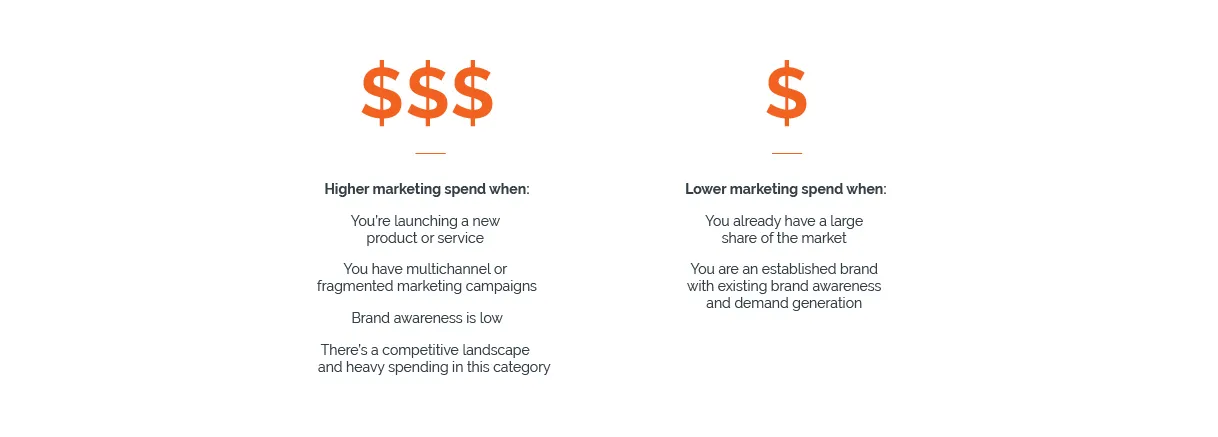How to set your marketing budget
Marketing budget benchmarks vary widely. Most commonly, they're anywhere from 3% to 12% of the brand’s total revenue. That said, there are a few key indicators to help figure out where you should be in that range, and several factors to consider when setting your total marketing budget.
Established brands versus newer brands
Established brands can spend on the lower side of that 3% to 12% of total revenue range due to existing brand awareness and demand generation. However, small businesses and start-ups with no or low existing awareness need to invest more in the short term to reap long tail benefits.
Marketing factors
How you approach marketing to your target audience is based on different overarching marketing factors. Below are examples of factors to consider when determining how much budget is needed to break-through with this audience. Understanding where your brand or product falls within your category and remaining conscious of these marketing factors will help you to determine how much reach (and at what frequency) you need to achieve your marketing and business goals.
Demand creation vs. demand harvesting
This is another important factor in the budget equation. There needs to be a balance between demand creation and demand harvesting in order to maximize the direct to consumer channel. Overinvesting in demand harvesting leaves little room to generate new demand. You’ll see short-term gains, but inhibit long-term sustainability in the D2C channel.
Demand creation examples include prospecting campaigns (print, digital, video, paid social and advertising), public relations, consumer events and generic paid search.
Demand harvesting examples are activities like email marketing, branded paid search, Google shopping, remarketing ads (display, social and dynamic) and abandoned cart messages.
Marketing funnel calculations
Your marketing budget calculation will vary based on what sales channels you have in play.
Here is an example for brands that sell direct to consumer only.
-
Start by determining your sales target. Make sure this is a reasonable target based on where you stand within your category.
-
Next, you will want to have a good understanding of your average order value to determine the number of transactions it will take to reach your revenue goal.
-
Apply your average transaction conversion rate and remember to be a bit conservative here. The market may fluctuate and be influenced by numerous outside uncontrollable factors. This will give you an idea of the number of website visits you will need to reach your revenue goal.
-
The next step is to think about your average ad conversion rate and work backwards to understand how many impressions you will need in the market to get the target number of website visits needed to reach your revenue goal.
What about ROI?
It’s hard to standardize ROI benchmarks due to a multitude of variables, but research shows ROI expectations range anywhere from 150% on the low end to 300-500% on the high end.
Small businesses and start-ups with no/low existing awareness or demand need to invest upfront beyond the standard benchmark, and may have periods of negative return on marketing while building a new brand.







